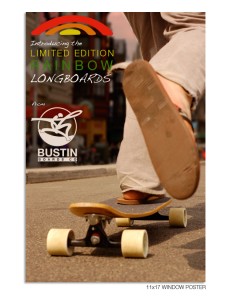A little information about Longboard gear
Skateboarding will continue to evolve as each skater generation passes. The Evolution of skateboarding generates ideas that grow the sport every year. Fixing cart wheels to a wood plank put the first skateboard in motion. The creation of urethane wheels improved that design forever.Skateboards require wheels to roll, but performance boards function most efficiently with the correct components. Curious skaters frequently ask why trick skateboarders prefer their wheels smaller and harder. The answer is simple; Short trick boards are designed lightweight to support aerial tricks and maneuvers whereas longboard wheels are designed for grip, fluid motion and rhythm.
Trick skateboard wheels are created from high tensile urethane, hard and strong. Formulated to be super lightweight, small, withstand high impact and reduce flat spots these wheels are for trick skaters who require less to do more.
Rated on a durometer system, all skateboard wheels are numbered according to urethane formula and hardness. Higher durometer wheels like 90a-99a are excellent slide wheels plus perform well on smooth surfaces and skate parks. These wheels usually have a narrower contact patch because they are not intended to grip, but support free motion in and out of tricks. Expect these wheels to make noise and be unpredictable on rough pavement, unless intended for sliding.
Slide wheels are ever evolving and many new formulas have been introduced to the skateboarding market. Wheels rated above 99a have been classified slide a, b and c formula. Slides put more stress on wheels than any other skate discipline and flat spotting ruins wheels. This happens when a wheel slides on the same ‘side surface’ for an extended period affecting the performance of the wheel. Flat spotting causes vibrations and noise during normal skating. These wheels are poured with a narrower contact patch to reduce friction and enable longer slides.
Mid durometer wheels 78a-89a are racers choice and excellent for smooth conditions. Poured in a variety of contact patches and sizes, these wheels are the standard of elite longboarders. Formulated to be sticky, the lower durometer 78a wheels will get stickier as they heat up making them ideal in cool conditions. Lower durometer wheels absorb vibration, stick turns and make carves very predictable. 78a wheel are an excellent choice for downhill steeps providing best traction. 80-86a durometer wheels function best when road conditions are smooth and the conditions are warm as they get sticker from friction. 89a wheels are the racers choice formula for very predictable, smooth conditions on a setup with appropriate rider wheelbase and setup. This is the highest recommended durometer for racing and will drift very well around fast, tight turns if used correctly, but use caution as these wheels are very advanced in high speed situations.
Wheels lower than 78a are great for cold or hot conditions when speed is not the only focus. Riding similar to tires with less air to absorb poor road conditions, these are excellent wheels for riders wishing to eliminate noise and vibrations. 69a-75a wheels recommended for the average rider because of their predictability and clean ride. Wider contact patches are offered for increased traction. Narrower contacts are poured for trick boarders wishing to ride softer and quieter.
Wheel size should be evaluated after choosing a board. Each board is shaped to support a unique discipline and will operate most efficiently when used with the correct truck/wheel combination. Larger wheels are recommended for hills and inertia. The fastest rolling wheel is the largest, with appropriate durometer for riding conditions. World class downhill racers use 75mm-93mm wheels to reach terminal longboarding speed. Hill bombers use 66mm-83mm wheels for greatest speed and control. City cruisers prefer 66mm-78mm wheels for optimal kick/push performance and speed. Beach bums prefer 60mm-70mm wheels for surfy carves and predictable slides.
Not all boards are created equal. Many boards will not support larger wheels because they will “wheel bite”. Noted as the most dangerous part of longboarding, wheel bite happens when carving, the wheel rubs the board and causes an abrupt stop…sending you off the front headfirst. This hurts a lot and can be avoided by investing in boards with wheel wells or bite free cutouts. Be sure to test your setup before riding and be sure to compensate by adding risers when necessary.
Remember, wheel preference is greater appreciated with experience. Invest in a variety of wheels and boards for the greatest longboarding experience. Experienced riders keep a quiver of boards/setups for all conditions. Ride fast, ride safe…ride SMART!


June 12th, 2009 at 6:22 pm
I really like your post. Does it copyright protected?
June 13th, 2009 at 2:32 pm
The article is ver good. Write please more
June 14th, 2009 at 8:20 pm
The article is usefull for me. I’ll be coming back to your blog.
June 15th, 2009 at 11:13 pm
How soon will you update your blog? I’m interested in reading some more information on this issue.